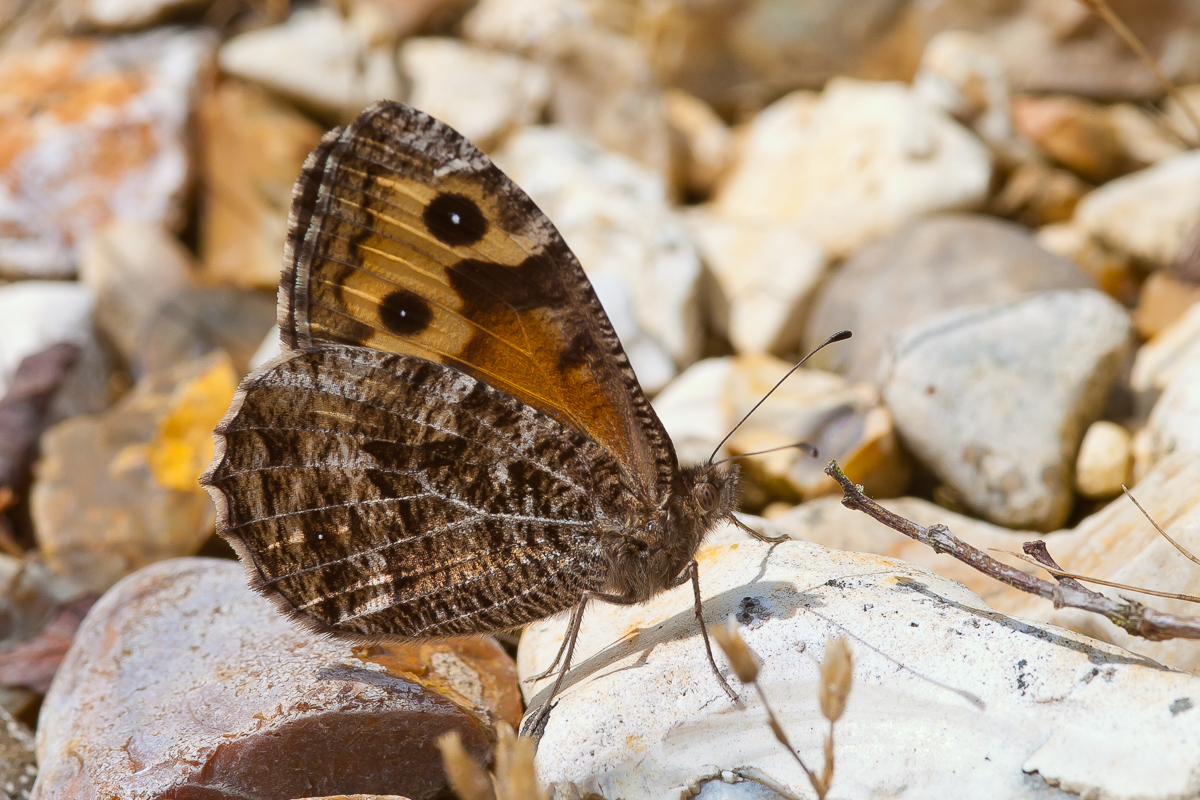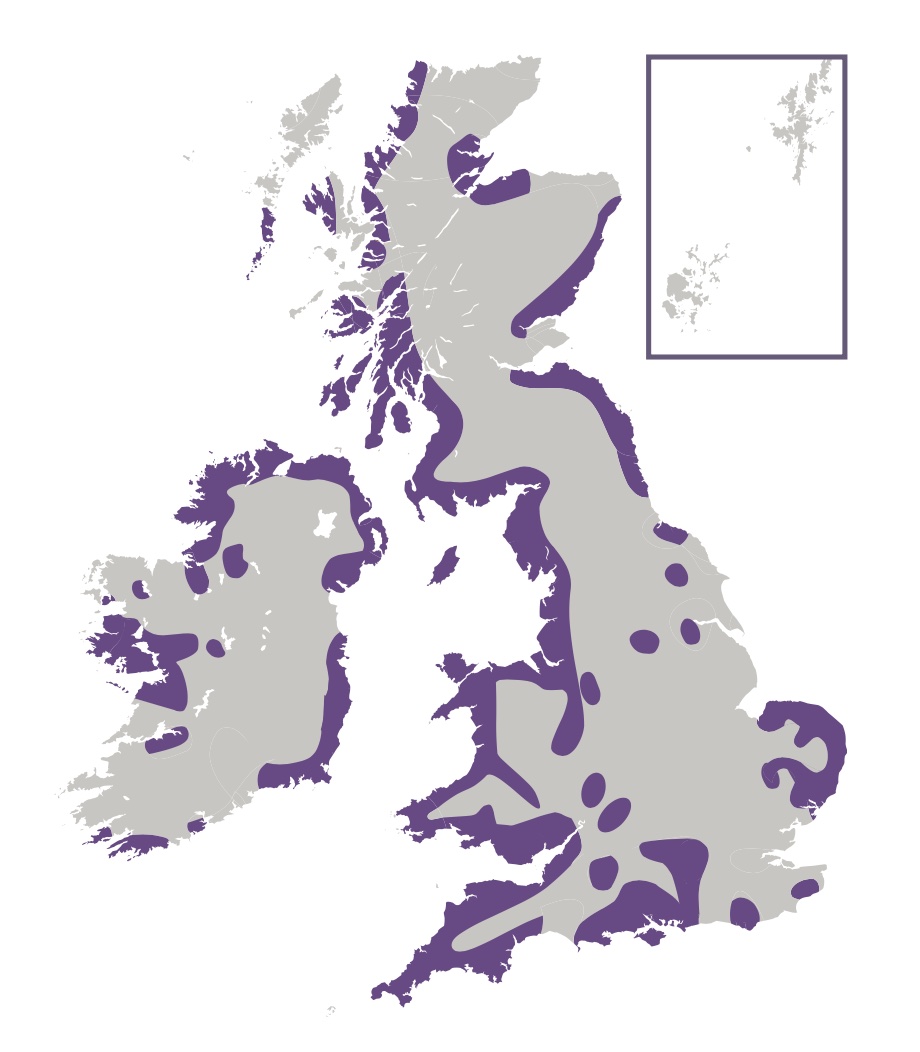
Photo © Peter Eeles
This butterfly, the largest of our 'browns', is a master of disguise - although fairly conspicuous when in flight, it can mysteriously disappear as soon as it lands, perfectly camouflaged against a background of bare earth and stones, always resting with its wings closed. When it first lands, and when disturbed, the butterfly will raise its forewings for a second or so, revealing dark eye spots that stand out against a beautiful spectrum of browns. This butterfly also has a curious technique for regulating body temperature by leaning its wings at different angles to the sun.
This butterfly is known for the variation between geographically-isolated populations, with 6 named subspecies occurring within the British Isles. This butterfly forms discrete colonies and, while some colonies are inland, the overall distribution of this butterfly would suggest that this is primarily a coastal species, at least in the British Isles. This butterfly is found on the Isle of Man and in the Channel Islands, but is absent from Orkney and Shetland. Colonies vary considerably in size, the smallest containing a couple of dozen and the largest several thousand - especially those found on large expanses of land, such as the heathlands of the New Forest.
The male is more-often seen than the female and is territorial, usually perching on the bare ground that typifies their habitat or, occasionally, on a tree trunk or boulder. The male flies up to investigate any passing object and, if he encounters a female, the two will land on the ground. The male lands immediately behind her before moving around to face her head on. An unreceptive female will flutter her wings while a virgin female will remain still, encouraging the male to perform an elaborate courtship.
He starts by flicking his wings upward to reveal the orange patches found on the underside of the forewings. He then flicks his wings open and shut for a short time before bowing to the female and slowly bringing his wings together, when the female's antennae are brought together over the sex brands found on the male's forewings, as the male returns to an upright position. The scent scales from the sex brands allows the male to seduce the female, allowing him to move behind the female who is then mated.
Unlike the territorial male, the female is most-often seen when egg-laying. Both sexes take nectar and will feed from a variety of plants, including Bell Heather, Thistle, Bramble and also Buddleia if found in the vicinity.

This butterfly is found on sheltered, sunny and dry sites where vegetation is sparse, providing the bare ground that this butterfly requires. Typical sites include heathland, sand dunes, coastal grassland and disused quarries.
Adults feed primarily on bird's-foot-trefoils (Lotus spp.), brambles (Rubus spp.), Buddleja (Buddleja spp.), heathers (Calluna and Erica spp.), Red Clover (Trifolium pratense), thistles (Carduus spp. and Cirsium spp.), Wild Marjoram (Origanum vulgare) and Wild Thyme (Thymus drucei).
The primary larval foodplants are Bristle Bent (Agrostis curtisii), Early Hair-grass (Aira praecox), Marram (Ammophila arenaria), Red Fescue (Festuca rubra) and Sheep's-fescue (Festuca ovina). Tufted Hair-grass (Deschampsia cespitosa) is also used.
